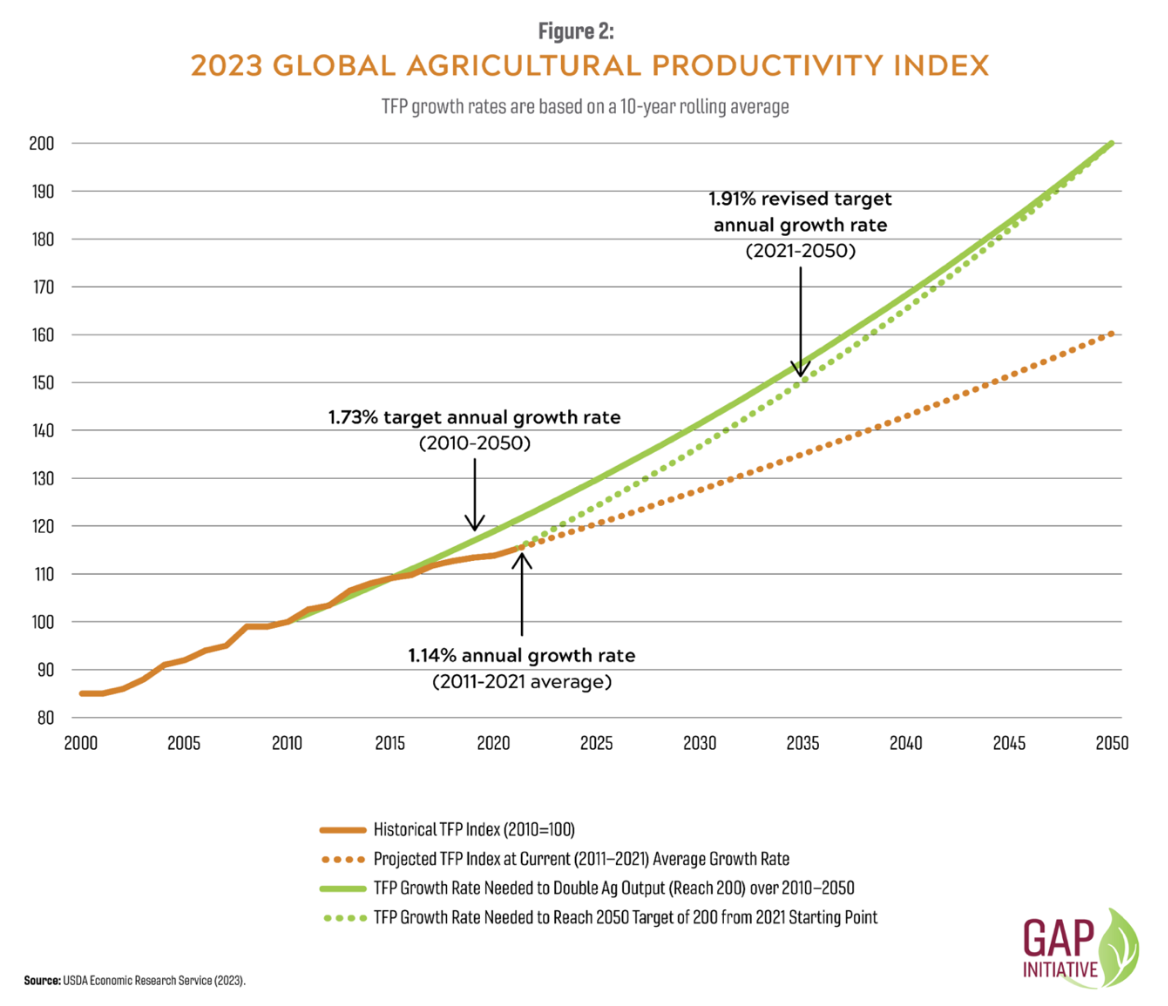Cary Fowler, President

July 30, 2025

Today, approximately 700 million people face hunger. 2.3 billion, or 28% of the world’s population, face food insecurity— limited access to food.
Healthy diets are out of reach for even more— unaffordable for 2.6 billion, more than a third of the world’s population, and two thirds of the population in Africa. Micronutrient deficiencies are a widespread challenge; two thirds of the global population do not consume enough iodine, vitamin E, calcium, and iron.
Within these vast numbers are the nearly 150 million children under the age of five who are stunted by malnourishment. This is an affliction that will affect these children mentally and physically for the rest of their lives, with profound implications for their countries’ economic and social development. In low-income countries, stunting affects more than a third of children under five. In Guatemala, for example, the rate is 45%.
This is the starting point from which we evaluate the prospects for 2050 and the need for American leadership and transformational change. Without action, our path forward is projected to be even more challenging.
Global food demand may increase by 50-60 percent from 2019 to 2050, as the world’s population grows by 1.5 billion. Meeting food demand, however, is not synonymous with meeting food needs, as many of the world’s poor exert little effective demand in the marketplace.
Much of the increase in both demand and need will occur in regions that are already the most food insecure and inaccessible to imports—meaning that food availability will need to increase more significantly in such places.
Food demand is driven not just by population growth, which is expected to plateau this century. The growing consumption of meat, dairy, and processed foods as incomes rise and populations become more urban, increases the pressure on agricultural systems. Livestock and poultry need land or grain themselves.
As a starting point, we need to produce much more per year just to stay on track for 2050 demand. But our trajectory trends negative.
Climate change is pushing crop yields down.
Climate change has already been a net negative for crop production, even as some crops and regions have benefitted. From 1980-2008, climate change is estimated to have decreased global corn production by 3.8% and wheat production by 5.5%.
Estimates of future crop yields vary by crop, region, time frame, extent of global warming, and assumptions regarding adaptation measures. One study predicts an overall reduction of global crop yields of 3-12% by mid-century; under a vigorous warming scenario, yields would decline in 75% of the places where they are grown.
The vast majority of studies show declines in yields in the global south.
Percent Impacts on Corn Yields

Further, unusually hot growing seasons are expected to become the norm within the next 10 to 15 years in many key production regions. This comes with immense challenges for agriculture: for each degree day corn spends over 86 F, yield is reduced 1%. If water is limited, the impact almost doubles. A full day of exposure to 102 F reduces yield 6-11%. Furthermore, with high heat comes a lower level of protein and other nutrients.
By the end of the century, the numbers are even more staggering: even accounting for adaptation measures, there could be 40% losses for maize in the grain belt of the U.S., southern Africa, and eastern China, and losses to wheat of up to 40% around the world. Over the long term, the largest changes to global aggregate yields will come not from decreases in regions that are already hot and less productive, but from more productive regions that have yet to adjust.
These numbers are not even the full picture. Many of these studies do not account for the effects of extreme and compound weather events on yield, given the challenges of doing so. As such, the negative impacts of climate change on crop yield will almost certainly be worse than what is quantifiably projected in the literature.
Projections can be debated and refined. However, the majority of studies indicate negative impacts on future yields as opposed to the sharply positive impacts that would be necessary to meet future food needs.
Current methods of adapting farming practices to the changing climate are not sufficient. Most face environmental, institutional, and technological barriers to feasibility, especially for small farmers. But even with adaptation, crop productivity is projected to decline.
Globally, we could still increase yields and production if the question of how were not relevant. Theoretically, we could sacrifice remaining natural lands and expand cropland, and in some places we could compensate with additional fertilizer or irrigation—all at a financial and environmental cost. This is partially how production is expected to increase by 14% over the next decade. Indeed, doubling of crop yields between 1960s and late 1990s came with a seven-fold increase in nitrogen use, three-fold increase of phosphorus, and a doubling of irrigation. That’s not really repeatable.
The United States in recent decades has relied on farmers increasing their productivity to provide sustainable increases in output. Productivity reflects the outputs achieved for a given amount of factors such as land, labor, capital, fertilizer and other inputs.
We are no longer increasing our productivity at the rate necessary to achieve the needed production levels by 2050. Currently, the global growth rate is 40 percent less than it needs to be. This suggests the “pace of innovation and the adoption of agricultural innovations are declining.”

There are important regional differences. For example, in sub-Sahara Africa, land clearing is at its highest rate since the 1980s while Total Factor Productivity is at its lowest since the 1970s (0.18%). Low-income countries as a whole have an even lower rate of increase, 0.11%. But even high-income and high producing countries are falling short of the 1.91% annual growth rate target.
Most yield projections relate to major crops: corn, wheat, rice and soy. If the goal is not just to achieve food (i.e., caloric) security, but to achieve nutrition security, we might be even farther away than these studies would indicate.
Nutrition security requires adequate intake of both macro- and micro-nutrients. Fruits and vegetables are important sources. Some 92% of production of these are not internationally traded, making local production and consumption essential. Only 13% of African countries have an adequate aggregate vegetable supply. Vegetables are sensitive to heat, particularly at certain stages such as flowering and fruit set. Presumably, the yields of many would be adversely affected by higher temperatures.
Further, we are farther away from adapting these crops to the changing climate. They lack significant investment in production-enhancing research as well as policy incentives to expand production. This could “drive these growers to move away from these diverse crops, further reducing the resilience of food systems by increasing risk of crop loss from pests, disease and drought…” Viable options may not exist for producing crops with better nutritional qualities.
Nutrition goes beyond availability to access. Nutritious foods are more expensive, and—even if production and trade can be enhanced—many households would need to more than double food expenditures to secure a healthy diet. This underscores the need to invest in improving the productivity of vegetables, fruits and other foods that will address in particular the malnutrition issues that affect so many, robbing children and countries of their potential.